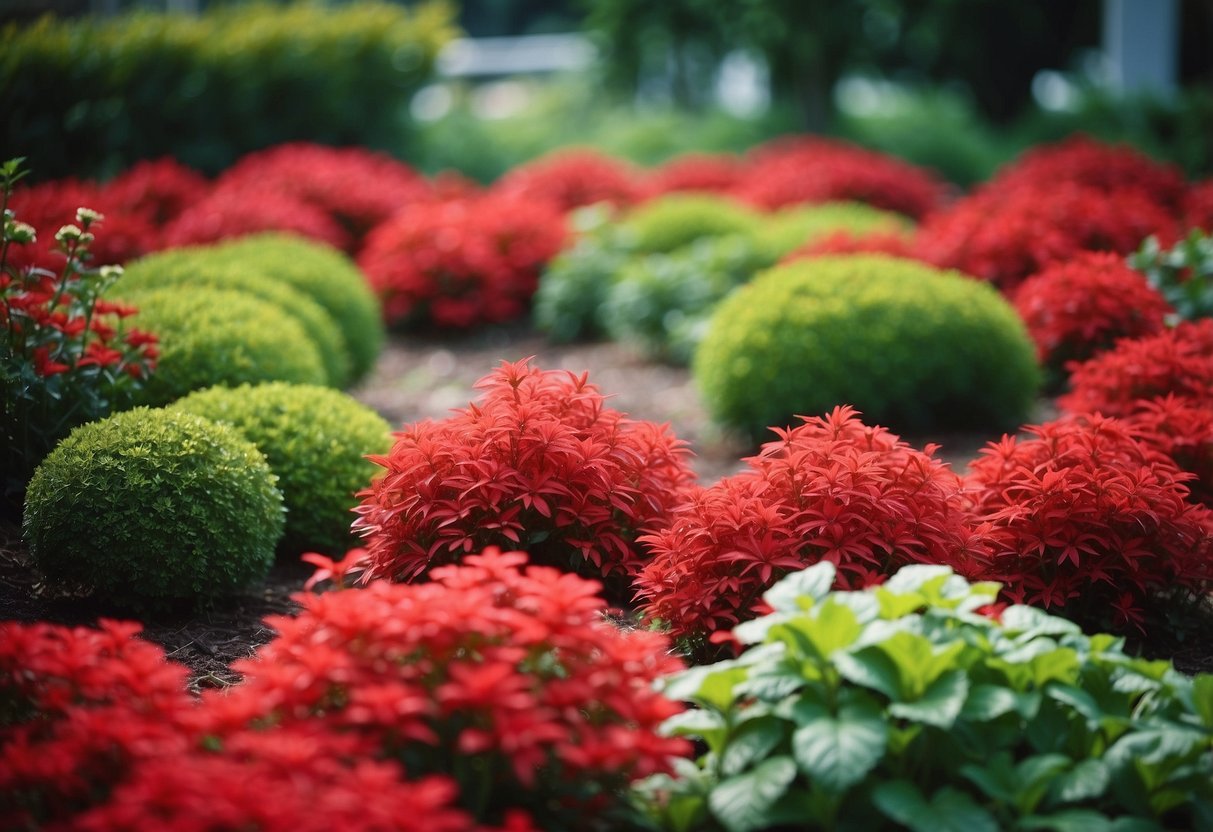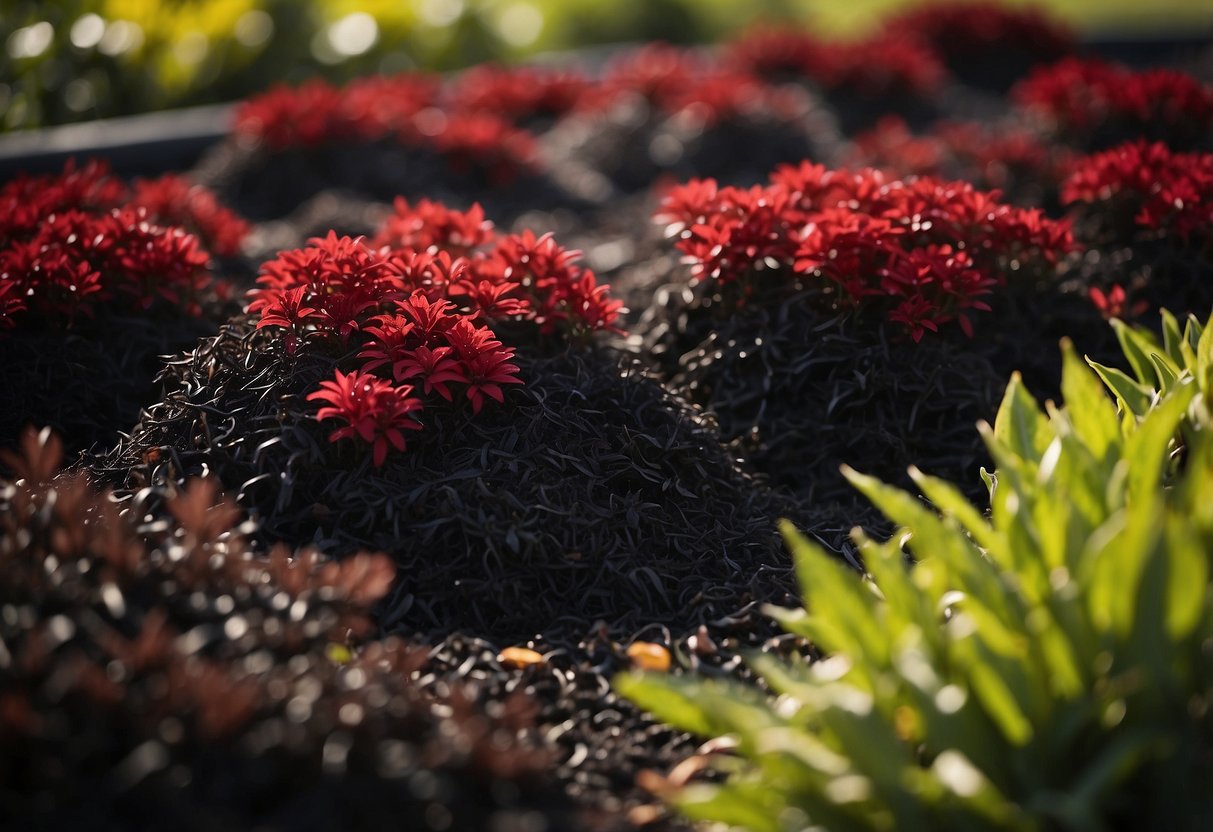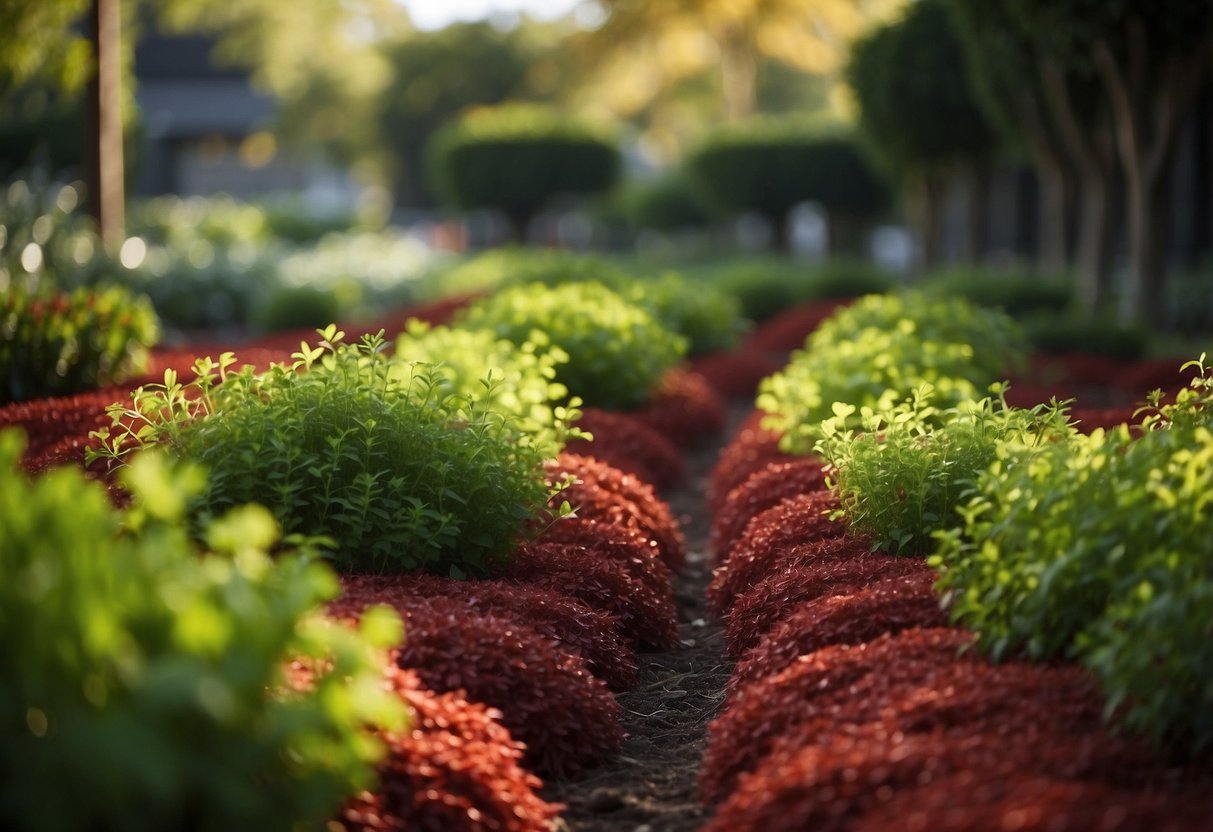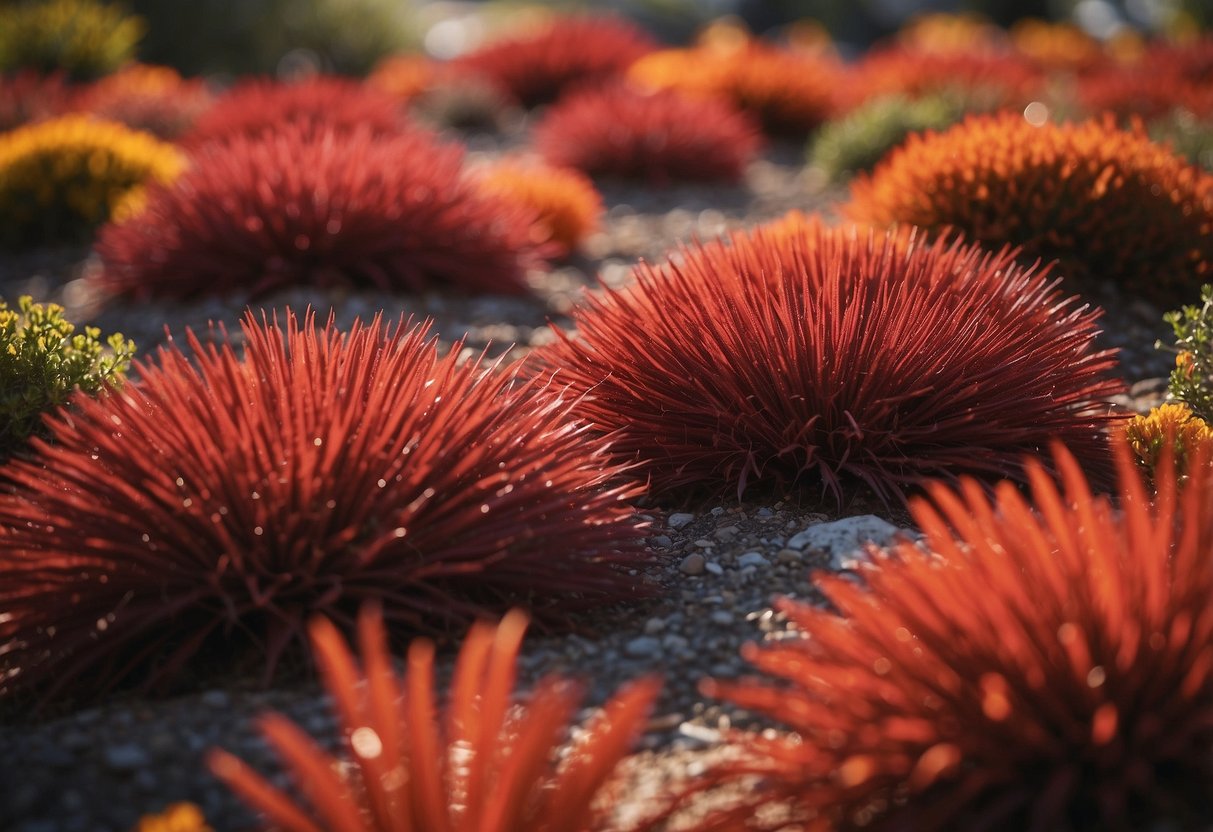Red Mulch Garden Ideas: Brighten Your Outdoor Space
Transforming your garden with red mulch can completely change the look and feel of your outdoor space. Whether you’re aiming for a vibrant, bold statement or a subtle pop of color, red mulch offers a versatile option that pairs well with various plants and landscaping styles.

Why should you consider red mulch for your garden? It not only enhances the beauty of your garden but also provides practical benefits like moisture retention, temperature regulation, and weed control. You’ll find that red mulch is an easy and effective way to refresh your garden’s appearance and promote plant health.
1. Use red mulch to create striking garden borders

Red mulch can make your garden stand out with bold and bright borders. It adds vibrancy and contrasts well with green plants. Placing red mulch around the edges of your flower beds or pathways gives a defined and neat look.
Besides aesthetics, red mulch helps keep weeds away. It’s a simple way to maintain your garden while adding color. You can also mix it with other elements like stones or plants for a unique touch.
2. Combine Red Mulch with Rock Pathways for a Unique Look

Using red mulch with rock pathways can make your garden look special. The contrast between the bright red mulch and natural rocks creates a visually appealing effect.
You can use rocks to outline flower beds filled with red mulch or create winding pathways through your yard.
This combination not only looks great but also helps with garden maintenance by reducing weeds and retaining moisture. For inspiration, check out these landscaping ideas with rocks and mulch.
3. Enhance Flower Beds with Red Mulch for Added Color

Red mulch can make your flower beds pop with vibrant color. The contrast between the red mulch and your blooms creates a striking visual effect. Whether you have petunias, marigolds, or zinnias, the red mulch works well with various flower hues.
Besides adding color, red mulch helps retain moisture and reduce weeds, keeping your flower beds healthy. It’s a simple way to enhance your garden’s look and functionality. For more ideas, you can check out these red mulch landscaping ideas.
4. Layer red mulch around trees to prevent weed growth

Clear the area around your tree first. Remove any existing weeds, grass, or debris.
Next, spread a weed barrier like newspaper or fabric. This helps keep new weeds from sprouting.
Now, apply a 2-4 inch layer of red mulch. Make sure to leave a small gap around the trunk to avoid rotting. This will keep weeds at bay and give your garden a nice, clean look.
5. Use red mulch in vegetable gardens for a pop of color

Red mulch not only benefits your vegetable garden but also adds vibrant color. It helps retain moisture in the soil, which is essential for healthy vegetables.
This mulch type also suppresses weeds effectively. You’ll spend less time weeding and more time enjoying your garden.
Place red mulch around plants, ensuring it’s not too close to the stems. This prevents rot while giving your garden a neat look.
Check out these red mulch benefits and tips to get started.
6. Mix red mulch with black mulch for a dramatic contrast

Combining red mulch with black mulch creates a striking look in your garden. The vibrant red stands out against the dark black, making both colors pop.
This mix works well in flower beds or around trees. Use it to accent borders or highlight specific plants. Your garden will benefit from the added depth and visual interest.
7. Create whimsical designs with red mulch in playgrounds

You can add fun and whimsy to playgrounds using red mulch in creative ways.
Consider making shapes or patterns with the mulch, like stars, spirals, or paths. This can make play areas more inviting for children.
Mix red mulch with other colors or materials for a playful, eye-catching look. This can make the playground feel even more magical and exciting for kids.
For more ideas, check out these backyard playground designs.
8. Use Red Mulch to Outline Garden Bed Edges

Adding red mulch to outline your garden bed edges can make your garden stand out. The vibrant color creates a clear, attractive border that defines the space well.
This technique also helps to reduce weed growth around your plants. It’s a simple way to enhance your garden’s appearance and keep it healthy and neat. Consider combining it with other materials like stone or wood for extra texture and contrast.
For more ideas, check out these garden bed edging tips.
9. Incorporate Red Mulch into Xeriscaping for Vibrant Visuals

Red mulch is a fantastic addition to xeriscaping. It adds bright color to your drought-tolerant garden. Use it around succulents and low-water plants for a striking contrast.
Include red mulch in pathways and borders to make your garden pop. It looks great next to rocks and gravel too. This combination can turn a dry landscape into something eye-catching.
Try using red mulch in raised beds or around trees. It helps retain moisture and reduces weed growth, which is perfect for xeriscaped areas.
10. Blend Red Mulch with Ornamental Grasses for Texture

Adding ornamental grasses to your garden is a great way to mix textures. Pair tall grasses with red mulch to create vibrant contrast. This combination can make your garden look more dynamic.
Use grasses like Feather Reed or Fountain Grass. They sway gracefully in the breeze, adding movement. The red mulch brings out the green in the grasses, enhancing their beauty.
Benefits of Using Red Mulch

Using red mulch in your garden can enhance its visual appeal while also providing practical benefits for plant health. Below, we discuss its aesthetic value and its role in soil moisture retention.
Aesthetic Appeal
Red mulch is a great way to add color to your garden. The bright, earthy red contrasts beautifully with green plants, making the foliage stand out more. This can make flower beds, pathways, and even patios look more vibrant.
Many gardeners love the pop of color that red mulch brings. It can make a rose garden look romantic and charming. In other settings like terraced gardens or around patios and decks, it creates a clean, low-maintenance look that ties different garden elements together.
Red mulch can also create a cohesive and organized appearance. By using it consistently across different areas, you give your garden a polished, uniform look. This can be especially helpful for highlighting specific plants or garden features you want to showcase.
Soil Moisture Retention
Red mulch doesn’t just look good; it also helps your plants stay hydrated. By covering the soil, it reduces evaporation, keeping moisture in the ground longer. This is particularly useful during hot summer months when water evaporates quickly.
When you use red mulch, you’ll notice that the soil stays damp for longer periods, reducing the frequency of watering. This is beneficial for plants like roses that need consistent moisture.
In addition, red mulch acts as an insulator. In summer, it keeps the soil cooler by blocking the sun’s heat. In winter, it helps retain warmth, protecting plant roots from extreme temperatures. This can lead to healthier, more resilient plants year-round.
Using red mulch is a simple and effective way to maintain soil moisture and promote better plant growth while also reducing your overall watering needs.
Best Practices for Applying Red Mulch

Properly applying red mulch can enhance your garden’s look while benefiting the plants. The key steps involve preparing the garden bed and using the right techniques during application.
Preparation of the Garden Bed
Start by removing any weeds and debris from the garden bed. Weeds can compete with your plants for nutrients, so it’s important to clear them out. Use a rake or a garden hoe for this task.
Next, level the soil and break up any large clumps. This creates a smooth surface for the mulch to sit on. You may also want to edge the garden bed to prevent the mulch from spreading into unwanted areas.
Consider laying down a layer of landscape fabric before adding the mulch. This can help reduce weed growth further. Make sure to water the soil lightly to provide a healthy base for your plants before applying the mulch.
Application Techniques
When applying red mulch, spread it evenly across the garden bed. Aim for a layer about 2 to 3 inches thick. This thickness helps retain soil moisture and suppress weeds effectively.
Avoid piling the mulch directly against the stems of plants or the trunks of trees. Doing so can cause rot and other issues. Instead, keep a small gap around these areas.
Use a rake to even out the mulch and achieve a uniform look. Remember, too thin a layer won’t be effective, and too thick may prevent water from reaching the roots.
If you are creating paths with mulch, ensure they are well-defined to add a neat, structured appearance to your garden. Regularly check the mulch to maintain its appearance and replenish it as needed.







